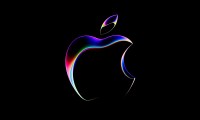
After bringing the fastest wireless networking standard available to its full line of MacBook Airs, Apple Senior Vice President of Marketing Phil Schiller also snuck a quick mention that new AirPort Extreme routers and Time Capsule wireless backup drives will support Gigabit Wi-Fi (also known as 802.11 ac) at WWDC this afternoon.
Since the 802.11ac standard can transfer data three times faster than the previous standard of 802.11n, both the new AirPort Extreme and Time Capsule are capable of reaching 1.3Gbps, according to Ars Technica. It should be able to handle three streams of data at the same time.

Likewise, the new Time Capsule will also be Gigabit Wi-Fi-ready, The most important spec you need to know about the latest Time Capsule is that it will be available in two capacities: With either a 2TB or 3TB standard hard drive. That should be plenty of room to archive all your photos, music, videos, and movies.
Although Schiller didn’t reveal when these news devices will hit retailers, Apple’s online store was down temporarily, which suggests that these new devices will be available shortly. Based on Apple’s consistent pricing strategies, these new models shouldn’t be significantly more expensive than the current generation. The 802.11n AirPort Extreme retails for $200, while the 2TB Time Capsule costs $300.



